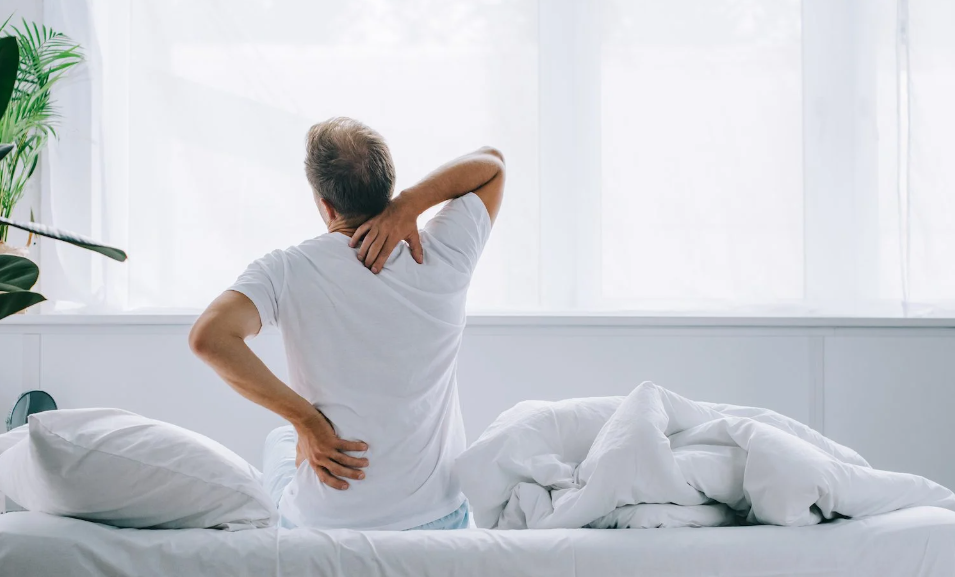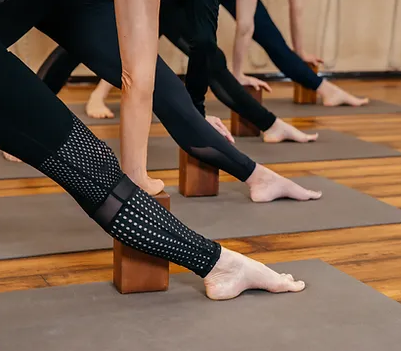Preventing Hip Pain: Strengthen the Hips and Glutes with Mobility and Balance
If you’re experiencing hip pain, back pain, knee discomfort, or balance issues, the source of your problem might surprise you. At Mt. Hope Chiropractic, we’ve observed a common pattern: many patients come to us with pain that actually stems from weak or imbalanced hip and glute muscles.
These powerful muscle groups form the foundation of healthy movement, yet they’re frequently overlooked until problems arise. Maintaining strong hips and glutes isn’t just about avoiding pain—it’s about enabling you to fully enjoy an active lifestyle throughout all four seasons.
Why Hip and Glute Strength Matters
The demands of daily life create unique challenges for our bodies:
- Winter weather challenges: Walking safely on icy sidewalks requires substantial hip stability and balance
- Seasonal activities: Snow shoveling, gardening, and leaf raking all rely on proper hip function
- Recreational activities: Activities like canoeing, cycling, and hiking require hip mobility and strength
- Workplace demands: Whether you’re in healthcare or working at a desk job, your hips are affected
Your hips and glutes serve as the power center for most body movements. When they’re functioning optimally, they:
- Stabilize your pelvis during walking and standing
- Support proper knee alignment during movement
- Generate power for climbing, lifting, and athletic activities
- Enable proper transfer of force between your upper and lower body
- Maintain balance on uneven terrain (crucial for Rochester winters!)
When weakness or imbalance develops in these muscles, the effects can cascade throughout your body, creating hip pain and overall dysfunction that might seem unrelated to your hips or glutes.
The “Sitting Epidemic” and Hip Health
Many people spend significant time sitting—whether during commutes, at desk jobs, or during long winter evenings. This prolonged sitting leads to what we call “sleepy glute syndrome,” where these powerful muscles become inactive and weak.
The consequences of this modern lifestyle are significant:
- Gluteal muscles become inhibited and harder to activate
- Hip flexors tighten, limiting proper movement and leading to hip pain
- Lower back muscles compensate, leading to fatigue and strain
- Walking patterns change, creating additional stress on knees and ankles
This is particularly relevant for professionals who may spend 8+ hours daily at desks before heading home to more sitting during evening activities.
Common Problems Stemming from Hip and Glute Issues
While hip pain and glute pain may be more straightforward when it comes to identifying problem areas, at Mt. Hope Chiropractic, we frequently see patients with these conditions that are actually rooted in hip dysfunction:
Lower Back Pain
Perhaps the most common connection—weak glutes force your back muscles to compensate during activities like lifting groceries or climbing stairs. This compensation leads to muscle strain and pain.
Knee Pain
Weak hip muscles, particularly the gluteus medius, can cause your knees to collapse inward during activities like hiking or squatting to garden. This improper alignment stresses the knee joint and can lead to persistent pain or even injury.
Hip and Knee Arthritis Progression
While arthritis has many causes, poor movement patterns from weak hips can accelerate joint degeneration. Proper hip function helps distribute forces more evenly through joints.
Poor Balance and Stability
Essential for navigating winter conditions, balance relies heavily on hip strength. Many falls and injuries among our patients could be prevented with better hip stability.
Reduced Athletic Performance
Whether you’re playing in a recreational sports league or trying to improve your golf game, hip strength directly impacts your performance and enjoyment.
Proactive Exercises for Preventing Hip Pain
Based on our experience with thousands of patients from across Monroe County, we’ve identified key exercises that are particularly effective for Rochester residents looking to strengthen their hips and glutes:
1. Glute Bridge (10 reps)
This fundamental exercise activates often-dormant gluteal muscles:
- Lie on your back with knees bent and feet flat on the floor
- Tighten your abdominal muscles and squeeze your gluteal muscles
- Lift your hips off the floor until your body forms a straight line from shoulders to knees
- Hold for 2-3 seconds at the top, focusing on the contraction in your glutes
- Lower slowly back to the starting position
- Repeat 10 times
For many patients who sit for long workdays, this exercise helps “wake up” muscles that have become inactive. It’s simple yet extremely effective for rebuilding gluteal strength.
2. Glute Bridge with Resistance Band (for progression)
Once the basic glute bridge becomes easier:
- Place a resistance band just above your knees
- Perform the bridge as described above, but also press outward gently against the band
- This additional challenge engages more muscle fibers in the outer hip
This variation is particularly helpful for runners who need lateral hip stability on trails and uneven terrain.
3. Hip Hinge Practice (5 reps)
Learning proper hip hinging is fundamental for protecting your back:
- Stand with your feet shoulder-width apart
- Place your hands on your hips
- Keep your back flat while bending forward from your hips (not your waist)
- Feel the stretch in your hamstrings while maintaining a neutral spine
- Return to standing by squeezing your glutes
- Repeat 5 times
Mastering this movement pattern helps prevent injuries during everyday activities like picking up items from the floor or loading groceries into your car.
4. Gentle Squat (10 reps)
This functional movement strengthens multiple muscle groups:
- Stand with feet slightly wider than hip-width apart
- Keeping your weight in your heels, lower your body as if sitting in a chair
- Only go as deep as comfortable while keeping your knees tracking over your toes
- Return to standing by pushing through your heels and squeezing your gluteal muscles
- Repeat 10 times
Proper squat form is crucial for Rochester residents, especially for seasonal activities like gardening in spring or lifting holiday decorations from storage in winter.
5. Squat with Resistance Band
To progress the basic squat:
- Place a resistance band just above your knees
- Perform the squat as described above, but also press outward gently against the band
- This increases activation of the hip abductors (outer hip muscles)
This variation is excellent for developing the lateral stability needed for activities like cross-country skiing at Mendon Ponds or navigating icy sidewalks in Brighton.
Addressing Hip Mobility: Equally Important
Strength without mobility creates its own problems. These stretches complement the strengthening exercises:
1. Hip Flexor Stretch
For those who sit at Rochester’s many office-based employers:
- Kneel on one knee with the other foot planted in front
- Keep your back straight and gently shift your weight forward
- Feel the stretch in the front of your hip on the kneeling leg
- Hold for 30 seconds on each side
2. Figure-4 Stretch
To target the deep rotators of the hip:
- Lie on your back with knees bent
- Cross one ankle over the opposite knee
- Gently pull the uncrossed knee toward your chest
- Hold for 30 seconds on each side
This stretch is particularly beneficial after activities like golfing at one of Rochester’s beautiful courses.
Beyond Exercises: Comprehensive Hip and Glute Health
While targeted exercises form the foundation of hip and glute strength, a comprehensive approach includes several other factors relevant to Rochester residents:
Everyday Movement Patterns
How you perform daily activities significantly impacts your hip health:
- Practice standing on one leg while brushing your teeth for improved balance
- Take the stairs instead of the elevator
- Park farther from entrances to stores to increase walking
- Perform mini-squats when picking items up instead of bending at the waist
Rochester Winter-Specific Strategies
Our challenging winters present unique opportunities for hip strengthening:
- Practice deliberate walking on slippery surfaces, engaging your hips for stability
- Use proper form when shoveling snow, initiating movement from your hips
- Consider indoor walking at RIT or University of Rochester when outdoor conditions are poor
- Try snowshoeing at Mendon Ponds for an excellent hip workout
Workplace Strategies for Rochester’s Professionals
If you work from an office most of the day, consider incorporating the following:
- Stand up every 30 minutes to reset your hip position
- Consider a sit-stand desk arrangement
- Perform seated glute squeezes during long meetings
- Take short walking breaks around your workplace
When to Seek Professional Care in Penfield or Brighton
While these proactive measures can significantly improve your hip function, sometimes professional guidance is necessary. Consider scheduling an appointment at Mt. Hope Chiropractic if:
- You experience pain in your hips, lower back, or knees
- You notice one hip is significantly tighter or weaker than the other
- You’ve recently increased your activity level and are experiencing discomfort
- You have a history of hip, knee, or back injuries
- You’re not seeing improvement despite consistent exercise
- You want a personalized assessment and exercise program
Our approach at Mt. Hope Chiropractic combines evidence-based assessments with personalized care. We don’t just recommend generic exercises—we identify your specific imbalances and design targeted strategies to address them.
The Mt. Hope Chiropractic Approach to Hip and Glute Health
At Mt. Hope, we take a comprehensive approach that includes:
- Functional movement assessment to identify your specific strengths and limitations
- Hands-on treatment to address restrictions that may be limiting your movement
- Personalized exercise prescription based on your needs and goals
- Education about optimal movement patterns for your daily activities
- Progression strategies to continually challenge your body as you improve
Our goal isn’t just to help you overcome current limitations but to build resilience that supports your active Rochester lifestyle year-round.
Take Action for Your Hip Health Today
Don’t wait until pain or dysfunction limits your ability to enjoy all that Rochester has to offer. Take a proactive approach to your hip and glute health today.
Start by incorporating these simple exercises into your daily routine. Just 5-10 minutes can make a significant difference in how you move and feel.
For personalized guidance and care, schedule an appointment at our Rochester office. Our experienced team is ready to help you build the strong foundation you need for an active, pain-free life.
Book your appointment today. Your body will thank you for the investment in your foundation!





